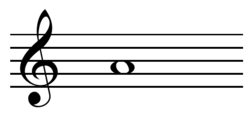Bark scale

The Bark scale is a psychoacoustical scale proposed by Eberhard Zwicker in 1961. It is named after Heinrich Barkhausen, who proposed the first subjective measurements of loudness. One definition of the term is "a frequency scale on which equal distances correspond with perceptually equal distances. Above about 500 Hz this scale is more or less equal to a logarithmic frequency axis. Below 500 Hz the Bark scale becomes more and more linear."
The scale ranges from 1 to 24 and corresponds to the first 24 critical bands of hearing.
It is related to, but somewhat less popular than, the mel scale, a perceptual scale of pitches judged by listeners to be equal in distance from one another.
Bark scale critical bands

Since the direct measurements of the critical bands are subject to error, the values in this table have been generously rounded.
In his letter "Subdivision of the Audible Frequency Range into Critical Bands", Zwicker states:
Thus the important attribute of the Bark scale is the width of the critical band at any given frequency, not the exact values of the edges or centers of any band.
Conversions
To convert a frequency f (Hz) into Bark use:
or (Traunmüller, 1990)
or (Wang, Sekey & Gersho, 1992)
See also
- Luminosity function, which describes the average sensitivity of the human eye to light of different wavelengths.
- Fletcher–Munson curves
- Equivalent rectangular bandwidth, the ERB scale
- Critical bands
References
External links
 Media related to Bark scale at Wikimedia Commons
Media related to Bark scale at Wikimedia Commons- Smith and Abel – Bark and ERB Bilinear Transforms (1999) Archived 2008-03-25 at the Wayback Machine
- Auditory scales of frequency representation

![{\displaystyle {\text{Bark}}=[(26.81f)/(1960+f)]-0.53\,}](https://wikimedia.org/api/rest_v1/media/math/render/svg/ca326ba477d81789d297c88b7f96c19cd7861bb2)
